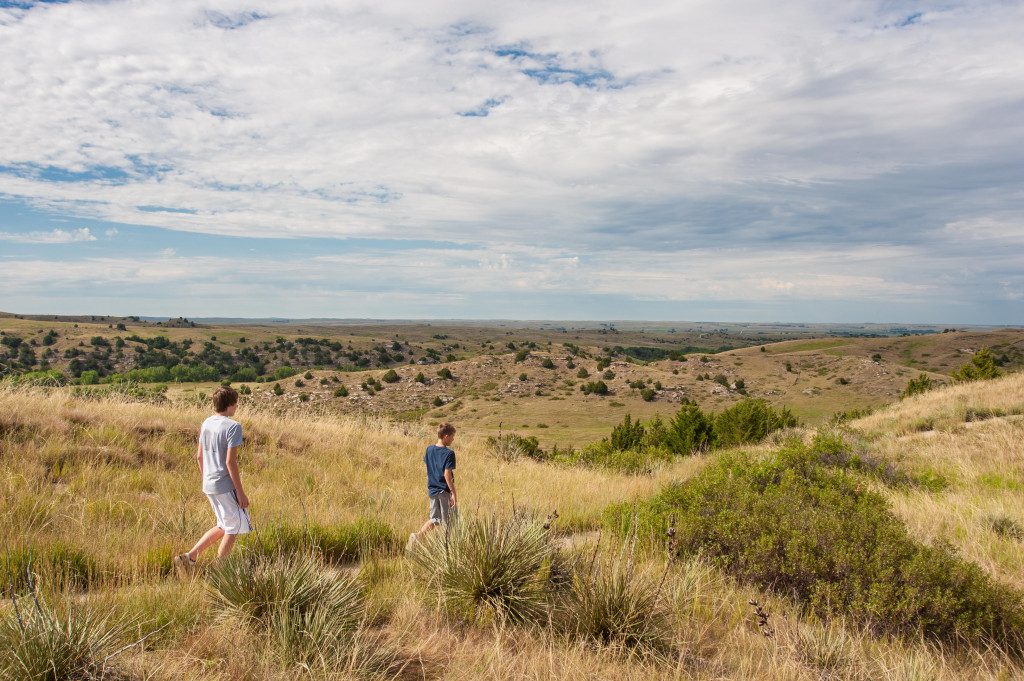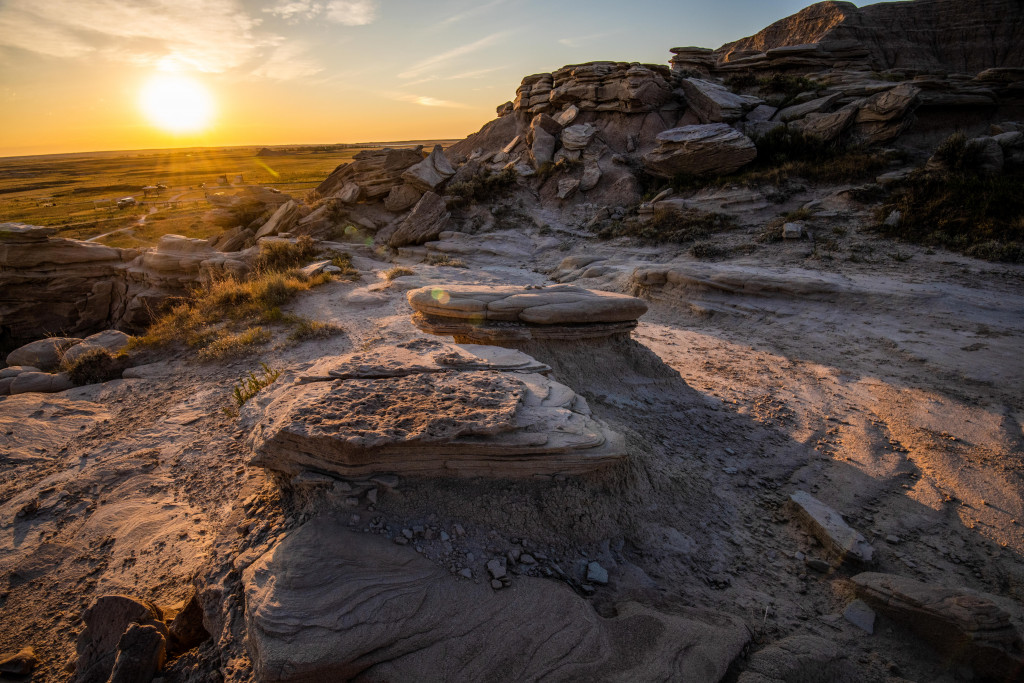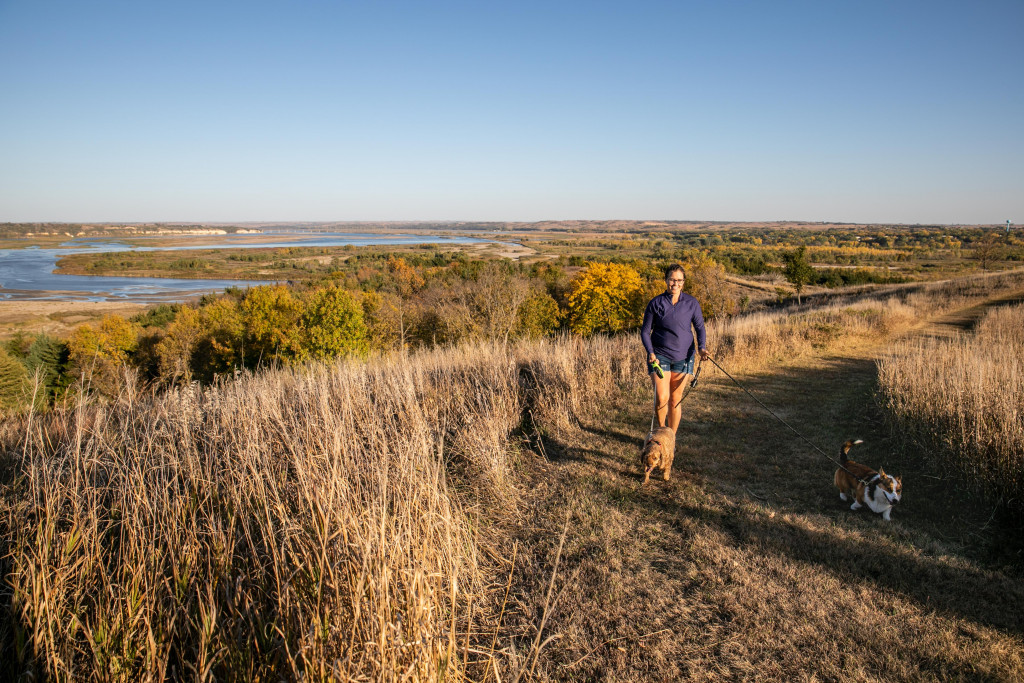
By Monica Macoubrie
I recently saw the most incredible meme: It compared hiking with a naturalist versus hiking with someone who was there for physical activity. The naturalist finished the 1-mile hike in about 3 hours, while the person motivated by exercise finished in about 11 minutes. You may be wondering why the naturalist took so long to finish the hike. Well, if you have ever hiked with a naturalist, or someone who appreciates nature, you know that every little thing is worth stopping for and exploring more closely. In the meme, the naturalist was pointing out lichen, bird sounds, animals that they saw, interesting-looking rocks and history about the land. The person hiking for physical activity missed all those things because they had their headphones on and was trying to outcompete themselves for best time on their smart watch. No matter your objective for hiking, remember that you’re out in nature.
Hiking in Nebraska is like this meme. Although we don’t have snow-covered Rocky Mountains, or tide pools, or scenic views of the Pacific Ocean, that absolutely does not mean there isn’t something worth seeing. We have waterfalls, like at Platte River State Park. We have chances to view bighorn sheep in place like Fort Robinson. We even have a cave area at Indian Cave State Park. It doesn’t matter what kind of adventurer you are — you won’t be lacking in views or things to see.
Maybe you already have a favorite hiking spot and looking for more inspiration. Or, maybe you’re looking for a way to get started. Read on about five places in Nebraska that will surely become new favorites.
Windlass Hill Trail – Ash Hollow State Historical Park
Ash Hollow State Historical Park near Lewellen was a major stopover on the Oregon and California trails, and ruts etched by west-bound wagons are still visible on the bluffs. The park offers nearly 9 miles of trails total, but if you’re looking for a place to hike where there’s little chance of running into people, then Windlass Hill Trail might be for you. Although Windlass is only a half-mile loop, it can be moderately challenging. Here, you can run, hike, walk or take the pups with you. Remember to take it slow and admire the wildflowers, see the yucca blooming, listen for grassland birds and be on the lookout for a variety of animals – mammals, rodents, reptiles and tons of insects.
Toadstool Trail – Toadstool Geological Park, Ogalala National Grassland
Hands down, I think this is the best hike in Nebraska. This trail is technically a little under 1 mile, but it is one of the best hiking trails in the Midwest. And don’t let its short length fool you. There are many other shorter loop trails and side trails to explore farther. So, why is this the best hike in Nebraska? It’s the scenery and the epic geological formations that will keep you there for longer than you planned. I personally hike this trail almost every year, and it is still my favorite place in Nebraska. So, lace up your hiking boots, pack a lunch, some water and enjoy the beauty that western Nebraska has to offer you!

Lake Ogallala Trail – Lake Ogallala State Recreation Area
Looking for a longer hike? Lake Ogallala Trail offers 9 miles around the “little lake,” located on the east side of Kingsley Dam and next to massive Lake McConaughy. This little jaunt will take you around the campgrounds and water, and the best time to go is March through October as the flowers will be in bloom, wildlife will be abundant, and the weather will be most favorable. For the birders reading, Lake Ogallala Trail is a fantastic place to see waterfowl, grassland birds and even owls and eagles.
Niobrara Loop Trail – Niobrara State Park
If you’re looking for a beautiful walk rather than a strenuous hike, I suggest visiting Niobrara State Park in northeastern Nebraska. For me, it’s not always about hiking, but rather enjoying being in nature and taking photos of neat little things I find. This 1.6-mile loop is great for camping, hiking and trail running. Niobrara State Park has over 14 miles of hiking trails total, and this loop is one of my favorite trails in the state. Here, prairie grass covers the hills for half of the hike and the other half is closed in by forested areas. This trail also borders the confluence of the Missouri and the Niobrara rivers. Overall, the Niobrara Loop Trail offers great views and abundant wildlife.

So, wherever you decide to hike this summer — whether that be the relaxing 1.6-mile loop at Niobrara State Park or the often grueling elevation gains at Indian Cave State Park — think about whether you will be the naturalist or the exerciser. Either way, you’re doing it right. Just remember to stop and enjoy the magnificent beauty that outdoor Nebraska has to offer.
